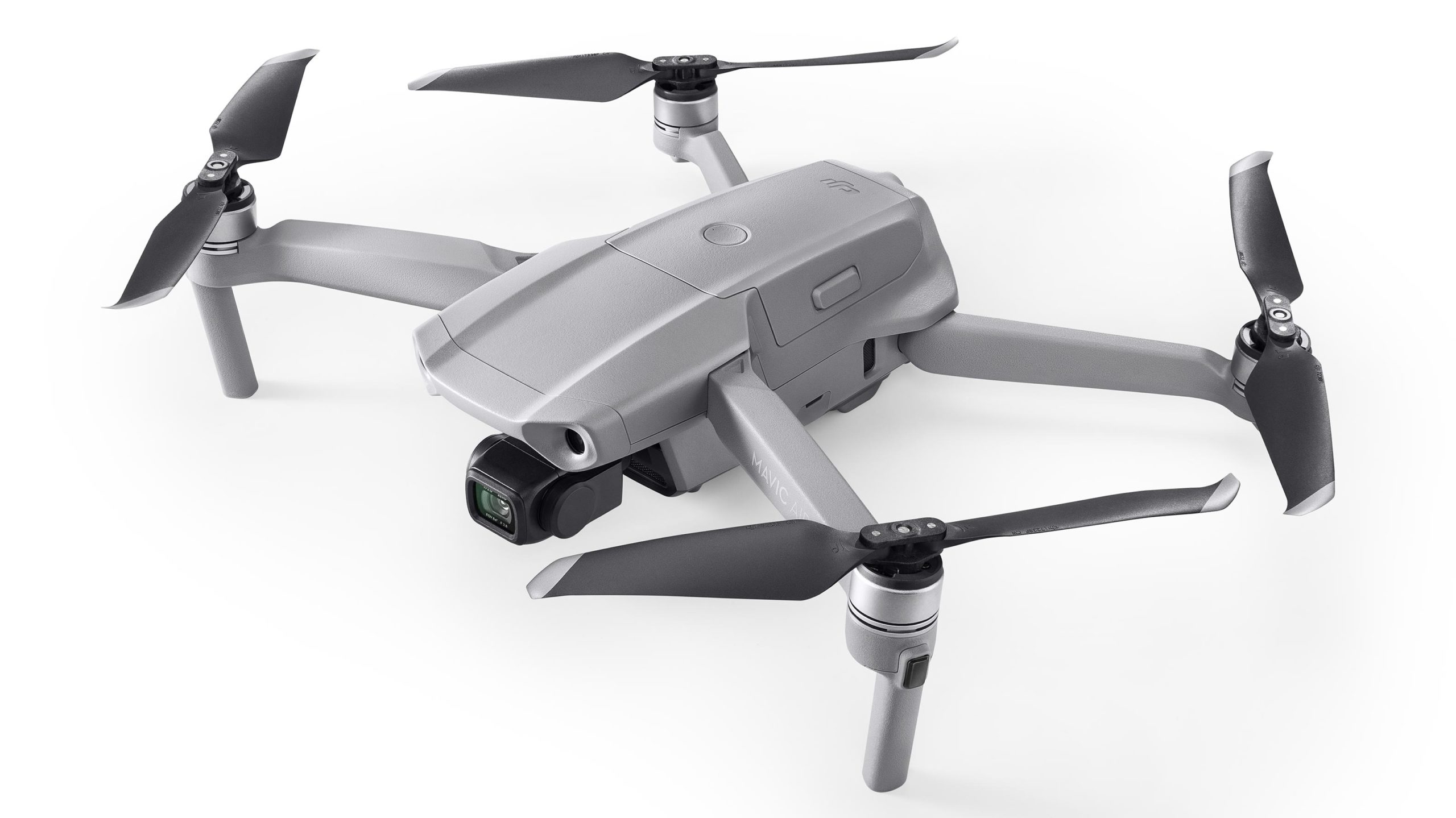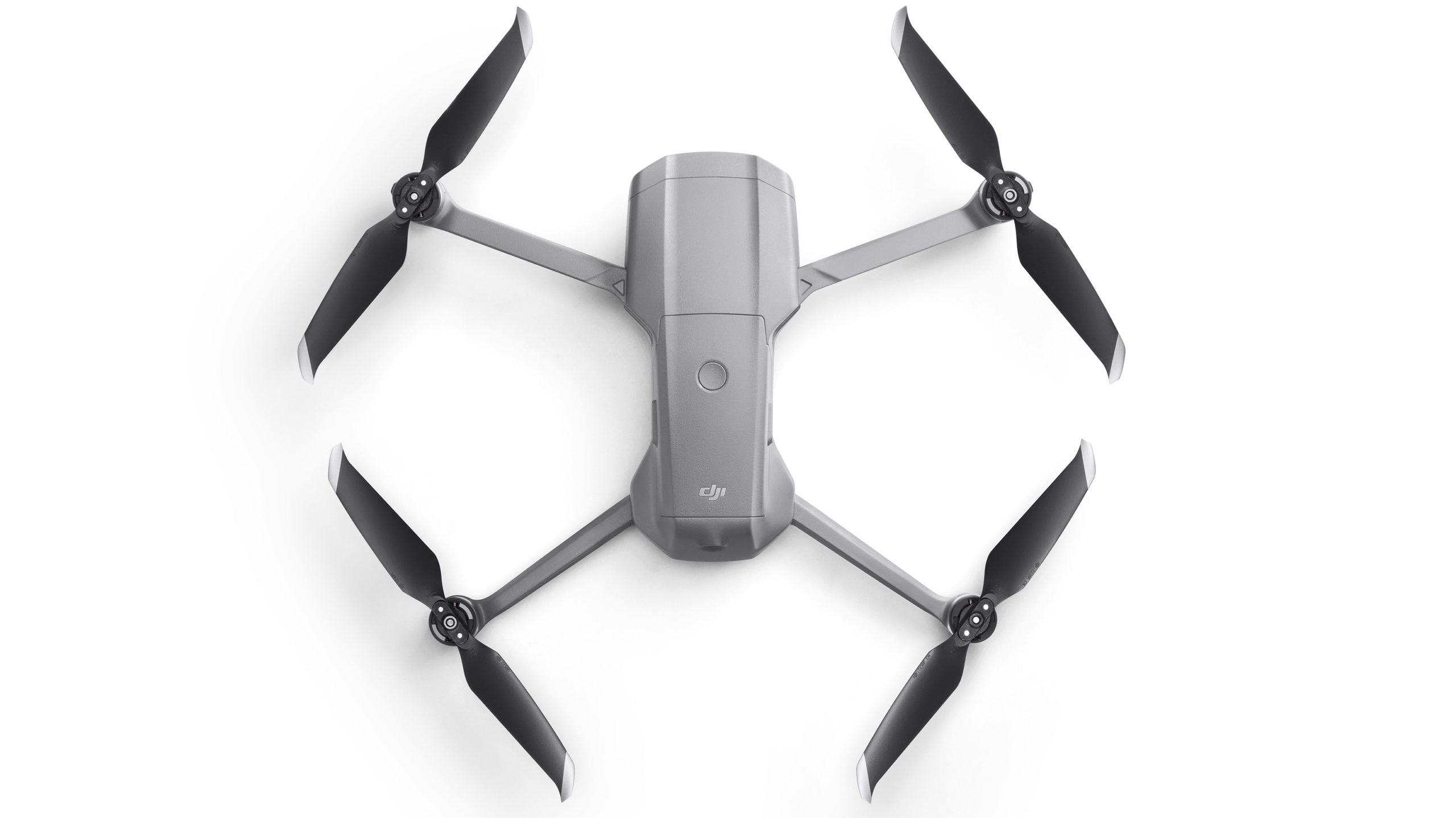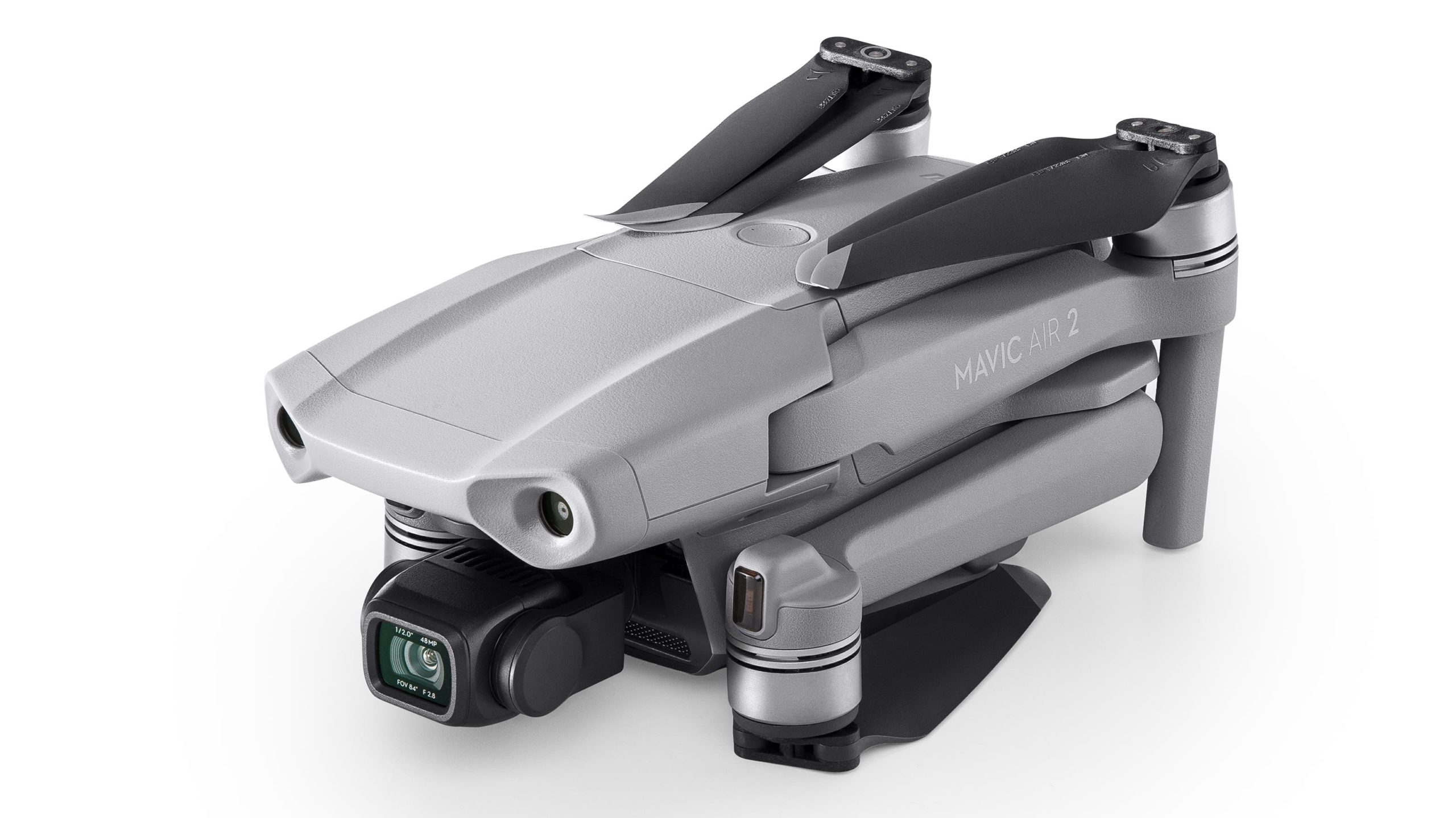
DJI has officially revealed the Mavic Air 2 following weeks of rumours regarding the drone’s release.
The new version of one of the industry’s most popular drones features 8K video, a camera sensor half an inch larger than its predecessor’s, longer maximum flight time, improved autonomous flying and in-app editing features.
DJI says the Mavic Air 2 is the first drone in the Mavic series to feature 4K video at 60fps and 120Mbps. Users can also record HDR video, 4x slow motion in 1080p at 120fps or 8x slow motion in 1080p at 240fps. The Mavic Air 2 is also capable of shooting 12-megapixel images and features a new high-resolution 48-megapixel camera. All of this is powered by a 3-axis gimbal that compensates for camera shake.

Similar to several smartphone manufacturers, DJI has also added a new SmartPhoto mode that records 12-megapixel photos using a new AI-powered scene analysis feature. SmartPhoto options include HDR photos that automatically capture multiple images and merge them to create a clearer photo with less noise, Hyperlight, a new feature that reduces noise in low-light scenes, and Scene Recognition, a setting that automatically recognizes specific objects, including sunsets, skies, grass, snow and trees.
There are three new capture modes as well. For instance, ActiveTrack 3.0 selects a subject to automatically follow, Point of Interest 3.0 sets an automated flight path around a specific subject and Spotlight 2.0 locks onto a subject in a frame while the user operates the drone’s movement freely.
Regarding flight performance, DJI says the Mavic Air 2 features improved motors, electronic speed controllers, a more aerodynamic design and up to 34 minutes of additional flight time over its predecessor. The company also states its OcuSync 2.0 transmission technology has been upgraded to deliver a stable HD video feed from the drone at a distance of 10km. OcuSync 2.0 supports both 2.4GHz and 5.8Ghz frequency bands and automatically switches between the two based on signal strength.

Further, there are now obstacle sensors on the front and rear of the drone that stop the Mavic Air 2 when it flies to close to an object. Other features include auxiliary lights on the top and bottom of the drone, as well as DJI’s geofencing technology to keep the Mavic Air 2 stay out of high-risk areas like airports.
Finally, the Mavic Air 2 features DJI’s Advanced Pilot System (APAS) 2.0 that is capable of automatically moving the drone on a new path to avoid a collision. DJI says this new version of the technology is capable of fluid movement around objects “even in highly complex environments.”
The standard version of the Mavic Air 2 is priced at $1,049 CAD, with the Fly More Combo — which includes a shoulder bag, ND filter, a charging hub and three additional batteries — costing $1,139. Pre-orders for the Mavic Air 2 are available now with the drone shipping on May 15th.
It’s important to note that given the Mavic Air 2 weighs in at 570g, all users require a license from Transport Canada before operating the drone. Further, the drone itself needs to be registered with Transport Canada. The ‘Basic’ online drone pilot exam costs $10 and can be taken at this link.
MobileSyrup may earn a commission from purchases made via our links, which helps fund the journalism we provide free on our website. These links do not influence our editorial content. Support us here.


